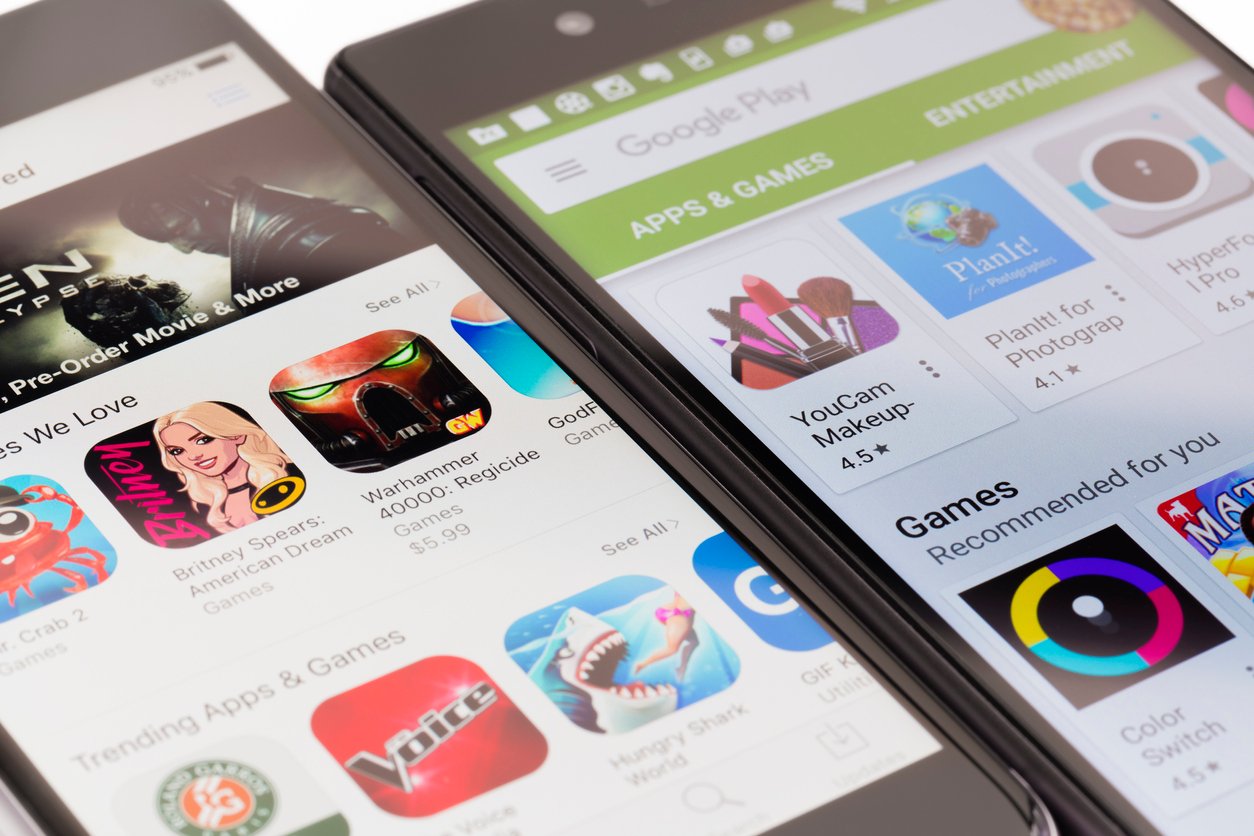We all know about virus protection for desktops and laptops, but what about the computers in our pockets?
Android vs iPhone
Don’t assume your iPhone is immune—or that your Android is particularly vulnerable, either. Yes, more than 90 percent of malware ends up on Androids, but the overwhelming majority of those are from third-party app stores on other continents. (It’s also important to remember that Android has the lion’s share of the market at ~86 percent of smartphone sales.) Apple only allows downloads from the App Store or verified developers. And while both phones block apps from accessing the OS or each others’ data (aka sandboxing), Apple is stricter. So you’ll want to keep a sharper eye out for signs of malware on Android devices and jailbroken iPhones.
Not all dangers come from shady apps, though. Dangers lurk in free Wi-Fi connections and sneaky spear phishing attacks. If you don’t follow cybersecurity best practices while using your mobile device, it’s even more important to recognize a possible virus.
5 Signs of Malware
1. Higher Data Usage
Weird charges on your phone bill, specific apps with oddly high data usage, or a massive increase in data consumption overall can point to a virus. If you check your credit card bill for unexpected charges, it’s the same drill.
2. Did You Download That App?
If apps appear out of the blue, they’re likely malware. Didn’t you learn anything from Limewire? Only download verified apps from official sources, like the Google Play Store.
3. Sluggish Battery and Crash-Prone
Maybe you’re behind on a software update. Maybe you just need to replace that battery. Or maybe it’s a virus. If your phone starts to slow down, hesitate before blaming Apple. That’s one telltale sign of a virus. Same goes for a battery that suddenly can’t hold a charge and apps that constantly apps. It could be technology aging, sure, but run a scan anyway.
4. Aggressive Ads
We don’t mean the scareware that pops up while browsing the web on your phone—we all get those. Nor do we mean the expected windows on publications’ websites asking you to subscribe. Although it should be noted that malvertising exists, where even reputable websites may have their ads infected without realizing it. If you start getting lots of pop-up windows or odd push notifications, it could be a sign of adware on your phone just waiting for you to give in to the phishing attempt. If your phone is sluggish already, you could click these by accident, and then you’ll really have malware problems.
5. Weird Messages You Didn’t Send
Remember the typical Twitter hack of the late aughts and 2010s? Your friends would tell you they got spammy messages from your account and you’d fix it. Think that but in text and email form. Better change your passwords after this virus scan.

How to Prevent Malware
First things first: Go back and read this blog’s opening section. Never assume your phone is immune. And it helps to buy official devices, not the Amazon equivalent of Canal Street knockoffs. You never know what software is already on those, and they’re likely Androids dressed up to look like iPhones. And of course, run a virus scan. Seriously, the simplest solution is almost always the best. Scope out reliable anti-virus software and put your machine through its paces. Or, y’know, don’t.
How to Remove a Virus From Your Phone
Luckily, it’s fairly simple to fix an infected phone. Get your IT jokes ready because the obvious answers are coming up.
For iPhone
Restart your phone and then test out some apps to see if they’re behaving normally again. Clear the browsing history and data from your browser of choice. Then restore the phone to an iCloud backup. If none of this works and you’re absolutely positive you have a malware problem, then it’s time for a factory reset.
For Android
Restart your phone in safe mode if you have the option. Then delete the infected app and any others you have a bad feeling about. Finally, install some serious security software and be on your merry way.

